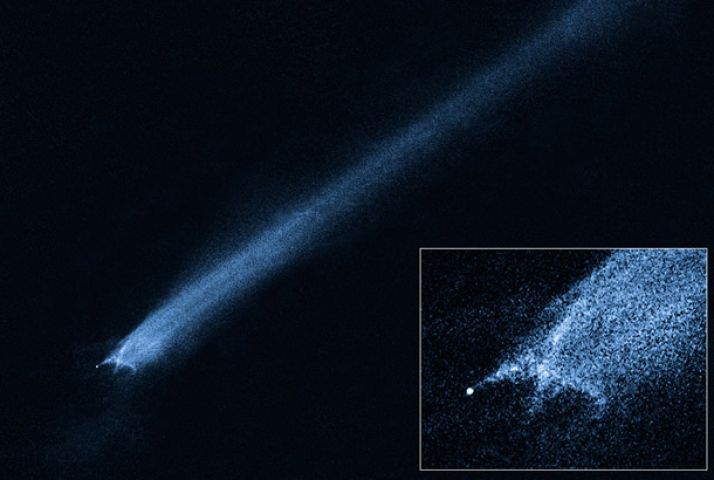
Astronomers have captured the sharpest, most detailed observations of a comet breaking apart 108 million kilometres from Earth with the help of NASA’s Hubble space telescope.
In a series of images taken over three days in January 2016, Hubble showed 25 fragments consisting of a mixture of ice and dust that are drifting away from the comet at a pace equivalent to the walking speed of an adult, said lead researcher David Jewitt from University of California, Los Angeles.
The images suggest that the roughly 4.5-billion-year-old comet, named 332P/Ikeya-Murakami, or comet 332P, may be spinning so fast that material is ejected from its surface.
The resulting debris is now scattered along a 4,828-km-long trail, said the study published online in Astrophysical Journal Letters.
These observations of the dispersion tells us about the volatile behaviour of comets as they approach nearer to the sun and starts to vaporize, hence unleashing powerful forces.
“We know that comets sometimes disintegrate, but we don’t know much about why or how,” Jewitt said.
“The trouble is that it happens quickly and without warning, so we don’t have much chance to get useful data. With Hubble’s fantastic resolution, not only do we see really tiny, faint bits of the comet, but we can watch them change from day to day. That has allowed us to make the best measurements ever obtained on such an object,” Jewitt added.